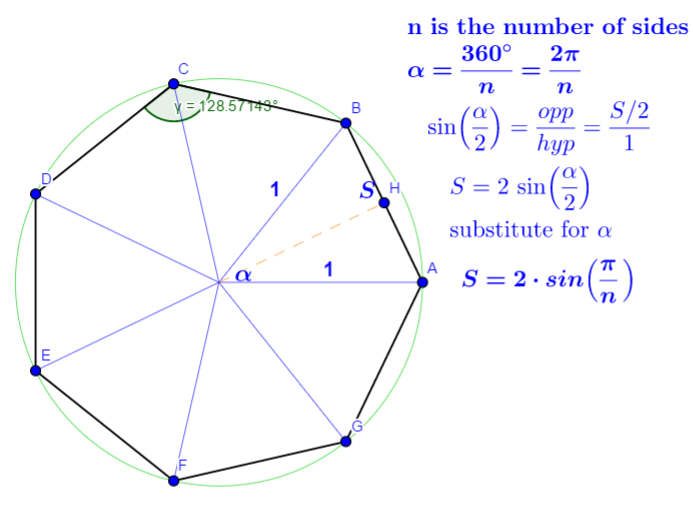Regular Polygon
Constructing the Regular Polygon
If we let the center point be at the origin, $(0,0)$, and we compute $\alpha$ as in
Figure 1, then, for the $7$-gon, each point is given by
$$B=\left(\cos(\alpha),\,\sin(\alpha)\right)$$
$$C=\left(\cos(2\alpha),\,\sin(2\alpha)\right)$$
$$D=\left(\cos(3\alpha),\,\sin(3\alpha)\right)$$
$$E=\left(\cos(4\alpha),\,\sin(4\alpha)\right)$$
$$F=\left(\cos(5\alpha),\,\sin(5\alpha)\right)$$
$$G=\left(\cos(6\alpha),\,\sin(6\alpha)\right)$$
If the polygon side length is a given value, then for example, with $S=100$, we would first need to calculate the radial length, which is the isosceles leg length,$\ell$.
$$\text{From the law of cosines }\ell^{2}+\ell^{2}-2\cdot\ell\cdot\ell\cos(\alpha)=S^{2}$$
$$\ell=\sqrt{\frac{1}{2}}\cdot S\cdot\sqrt{\frac{-1}{\cos(\alpha)-1}}$$
then, $A=(\ell,1)\quad B=\ell\left(\cos(\alpha),\sin(\alpha)\right)\quad C=\ell\left(\cos(2\alpha),\sin(2\alpha)\right)\quad etc$.
